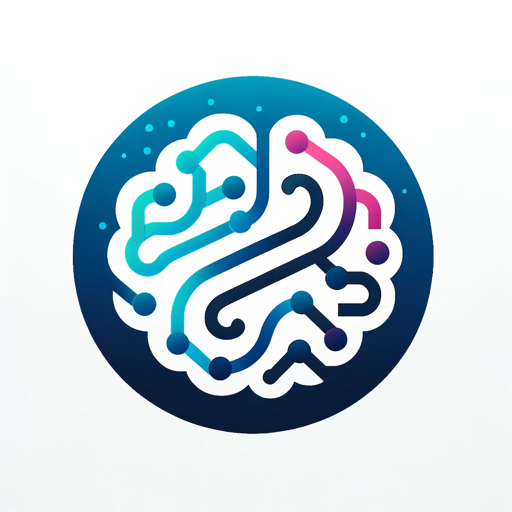EndoAssist+-AI-powered endocrinology assistant.
AI-driven support for endocrinologists.
Related Tools
Load More
Dental GPT
AI Assistant for Answering Dental Questions

Medi Assistant
Professional aid in family medicine, focusing on medical accuracy and conciseness.

MedAssist
Pioneering personalized healthcare through AI: From diagnosis to tailored treatments, we're transforming care for every unique journey with adaptive algorithms. Revolutionizing well-being, one algorithm at a time.

Med Mentor
Friendly, concise guide for residents, with cost insights and bullet points.

MediAssist - Learn Medicine Quicker!
Studying Medicine Shouldn't Take Years...

Medi Assistant
Formal, doctor-like assistant for healthcare providers.
20.0 / 5 (200 votes)
Overview of EndoAssist+
EndoAssist+ is an advanced AI platform specifically designed to support endocrinologists in their clinical practices. It leverages a comprehensive database, continuously updated with the latest medical research, to provide accurate information on endocrine disorders, treatment options, and medication interactions. The platform's purpose is to enhance diagnostic accuracy, streamline patient assessments, and offer evidence-based treatment suggestions, ensuring that endocrinologists can make informed decisions swiftly and effectively. EndoAssist+ is particularly useful in analyzing patient histories, interpreting laboratory results, and offering personalized therapeutic recommendations. For example, in a scenario where a patient presents with symptoms of hypothyroidism, EndoAssist+ can assist in evaluating their thyroid function tests, cross-referencing the data with clinical guidelines, and suggesting potential treatment pathways.

Core Functionalities of EndoAssist+
Endocrine Disorder Diagnosis Assistant
Example
A patient exhibits symptoms such as weight gain, fatigue, and cold intolerance. The endocrinologist uses EndoAssist+ to input clinical symptoms, lab results (e.g., TSH, T4 levels), and medical history. The AI analyzes the data and suggests potential diagnoses, such as hypothyroidism or adrenal insufficiency, along with a recommended diagnostic workflow.
Scenario
In a busy clinical setting, where time is of the essence, the diagnosis assistant helps quickly narrow down potential endocrine disorders by processing complex data and providing a list of differential diagnoses.
Diabetes Treatment Management
Example
An endocrinologist managing a patient with Type 2 Diabetes inputs the patient's glucose readings, HbA1c levels, and current medication regimen into EndoAssist+. The platform analyzes this data against current treatment guidelines and suggests adjustments to the medication, such as adding a GLP-1 receptor agonist or adjusting insulin dosages.
Scenario
For patients with complex diabetes management needs, this function assists in fine-tuning treatment plans based on the latest clinical evidence and patient-specific data, ensuring optimal glycemic control.
Thyroid Dysfunction Assessment
Example
A patient with a history of hyperthyroidism presents with new symptoms of palpitations and anxiety. The endocrinologist uses EndoAssist+ to review the patient's lab results, including TSH, T3, and T4 levels, and the AI provides a detailed interpretation of whether the patient is experiencing a relapse or requires a treatment adjustment.
Scenario
This function is critical in scenarios where thyroid function needs close monitoring, helping endocrinologists make timely and precise adjustments to therapy.
Target Audience for EndoAssist+
Endocrinologists
The primary users of EndoAssist+ are endocrinologists who benefit from its evidence-based diagnostic and treatment recommendations. It aids in the complex decision-making processes involved in managing endocrine disorders, offering tools that streamline diagnosis, treatment adjustments, and long-term patient monitoring. Endocrinologists dealing with high volumes of patients, complex cases, or seeking up-to-date clinical guidelines would find this platform especially beneficial.
Endocrinology Fellows and Medical Students
Endocrinology fellows and medical students can use EndoAssist+ as a learning tool, benefiting from its detailed analysis and explanation of endocrine disorders. It helps them understand the rationale behind certain diagnostic and treatment decisions, providing an educational experience alongside its clinical utility. This group would use the platform to enhance their understanding of real-world cases and gain insights into best practices in endocrine care.

How to Use EndoAssist+
1
Visit aichatonline.org for a free trial without login, also no need for ChatGPT Plus.
2
Select the specific assistance function you require, such as diagnosis support, treatment recommendations, or hormone therapy optimization.
3
Input the relevant patient data or case details, either by manually entering the information or uploading files directly into the system.
4
Follow the prompts to refine your query, including responding to questions about symptoms, lab results, or treatment history to ensure accurate and tailored recommendations.
5
Review the provided recommendations, which are based on up-to-date clinical guidelines and evidence. You can also export the results to a document for your records or further analysis.
Try other advanced and practical GPTs
chatdbt
AI-Powered Assistance for dbt Development

Professional Coach
AI-powered self-reflection for growth.

Camino de Santiago's Assistant
AI-powered tool for Camino pilgrims

Virtual Browser Chat
AI-powered tool for web data extraction.
模写クリエイター(Image Replicator)
AI-Powered Image Replication and Modification

Wisdom of Zhuangzi - 荘子
Unlock ancient wisdom with AI-powered insights.

미드저니 프롬프트 만드는 프롬프트
Create detailed AI-generated images effortlessly

中文為主
AI-powered Chinese translation and adaptation for Taiwan

FORTUNE teller (사주팔자, 四柱八字)
AI-powered Four Pillars of Destiny reader

Knowledge Navigator
AI-driven solutions for complex queries

AI PPT
AI-powered tool for smart presentations

Elite Copywriting Oracle
AI-powered copywriting at your fingertips.

- Case Analysis
- Treatment Planning
- Clinical Research
- Patient Management
- Diagnosis Support
Detailed Q&A About EndoAssist+
What is the primary purpose of EndoAssist+?
EndoAssist+ is designed to assist endocrinologists by providing advanced AI-driven support for diagnosis, treatment planning, and patient management in various endocrinological disorders. It offers evidence-based recommendations tailored to individual patient cases.
How does EndoAssist+ ensure accuracy in its recommendations?
EndoAssist+ utilizes algorithms based on validated clinical guidelines and continuously updated medical literature to ensure that its suggestions are both accurate and current. It cross-references patient data with established protocols to provide precise recommendations.
Can EndoAssist+ be integrated into an existing electronic health record (EHR) system?
Yes, EndoAssist+ can be integrated with most EHR systems, allowing seamless access to patient records and the ability to incorporate AI-driven insights directly into your workflow.
What kind of data input does EndoAssist+ require?
EndoAssist+ requires detailed patient information such as medical history, lab results, current medications, and symptom descriptions. This data can be manually entered or uploaded in document format for analysis.
Is EndoAssist+ suitable for use in academic research?
Absolutely. EndoAssist+ can be a valuable tool in academic research, offering insights into endocrinological conditions, providing literature reviews, and aiding in the analysis of complex datasets.